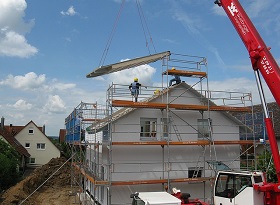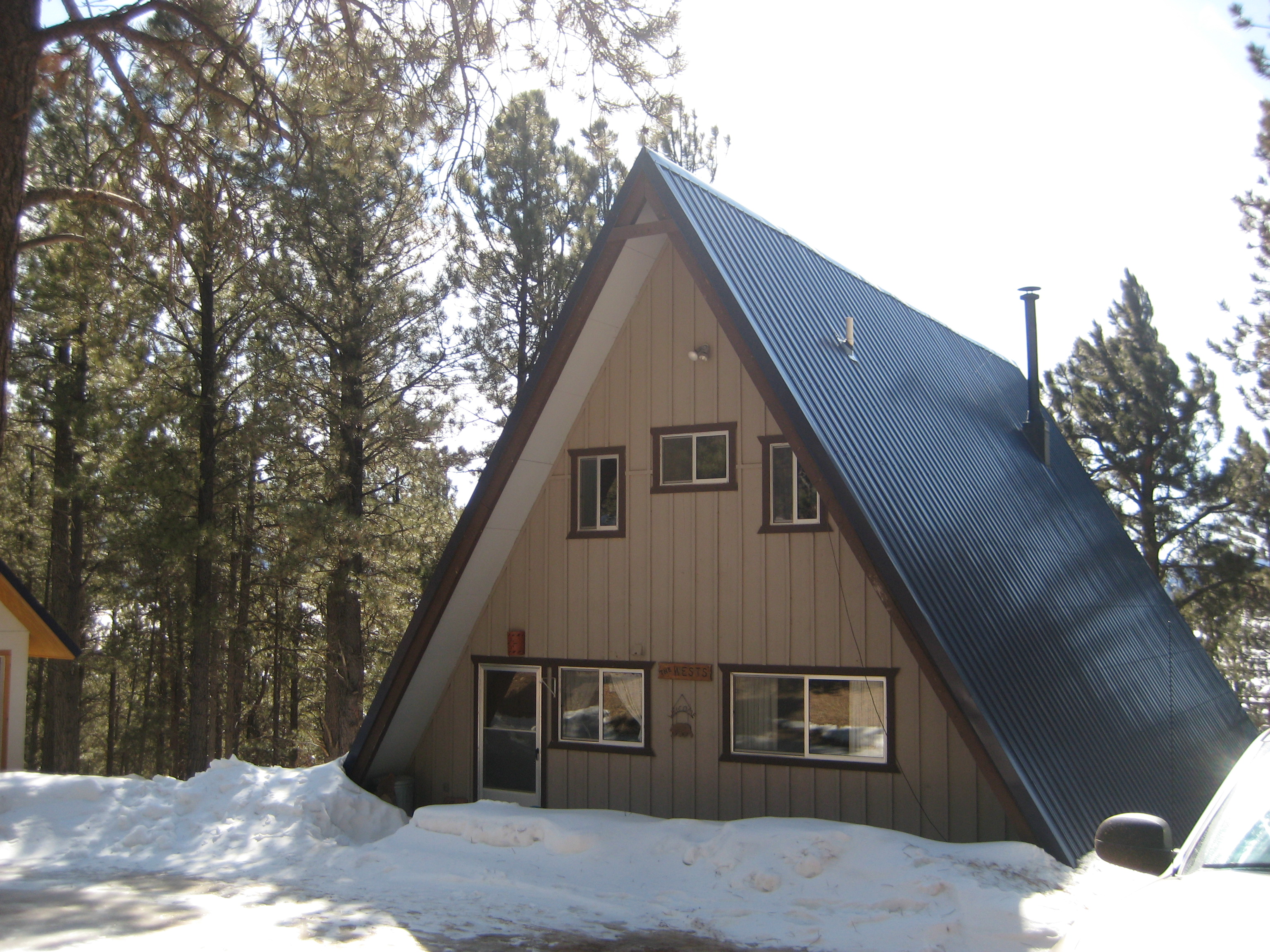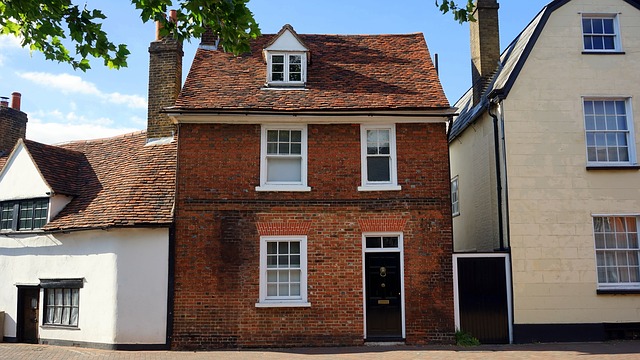House

|

|

|

|
A house is a building that functions as a type of dwelling (or domestic building) used for residential purposes, i.e. as a place of permanent or semi-permanent habitation. House style and design can range from simple huts or shacks in places like shanty towns and favelas, to multi-storey mansions containing a huge variety of amenities and services.
The social unit that lives in a house is known as a household. According to the Household Projections: England prepared by the Department for Communities and Local Government, a household, as defined in the 2011 Census is; ‘one person living alone; or a group of people (not necessarily related) living at the same address who share cooking facilities and share a living room or sitting room or dining area’.
For more information, see Household.
Conventional modern houses tend to contain the following:
- One or more bedrooms.
- Bathroom/s.
- Kitchen.
- Living room.
- Dining room.
- Building services such as plumbing, ventilation, heating, electricity, security, and so on.
Houses can be attached to outbuildings such as a garage, porch or shed, and may have a front and/or back garden, driveway, and so on.
There are a number of different types of house, including:
- A-frame house.
- Bungalow.
- Condominium.
- Cottage.
- Detached.
- Double fronted house.
- Maisonette.
- Mansion.
- Semi-detached.
- Terraced.
Traditionally, houses are built speculatively by a developer (or housebuilder), and people then buy them and move in. Homebuyers typically require a mortgage to enable them to purchase a house. This is a loan ‘secured’ against the value of the house until it is paid off over several years. There is often a sequence of homebuyers and sellers whose transactions are dependent on one another. This is known as a property chain.
Houses can also be self-built, which is where the prospective homeowner instigates the development of the house themselves, whether by purchasing a kit house, employing a design and build contractor, employing consultants (such as an architect) and a contractor, or managing the entire process and ordering all the goods and services required themselves. However, self-building does not necessarily mean that the physical construction is undertaken by the homeowner.
For more information, see Self-build homes.
There are various different forms of tenure which apply to houses, such as owner occupation, private renting, social housing and so on. For more information, see Housing tenure.
Houses are the main asset that is bought and sold on the housing market which follows the economic principles of supply and demand. When the production of housing outpaces the demand there is a housing surplus. When housing production falls behind demand there is a housing shortage.
For more information, see Housing shortage.
Since houses produce significant carbon emissions, there has been a strong emphasis in recent years on increasing their energy efficiency , both in terms of the way new-builds are constructed and the way existing houses are retrofitted. Various initiatives have been developed such as zero carbon homes, the Code for Sustainable Homes, Passivhaus and so on.
[edit] Related articles on Designing Buildings
- Affordable housing.
- British post-war mass housing.
- Building.
- Domestic building.
- Dwelling.
- Flat definition.
- Home ownership.
- Household.
- Housebuilder.
- Housing associations.
- Housing benefit.
- Housing Capacity Study.
- Housing costs.
- Housing Delivery Test.
- Housing shortage.
- Housing standards review.
- Housing white paper 2017.
- Local housing need.
- Minimum space standards.
- Residential definition.
- Smart home.
- The future of housing.
- Types of dwelling.
Featured articles and news
RTPI leader to become new CIOB Chief Executive Officer
Dr Victoria Hills MRTPI, FICE to take over after Caroline Gumble’s departure.
Social and affordable housing, a long term plan for delivery
The “Delivering a Decade of Renewal for Social and Affordable Housing” strategy sets out future path.
A change to adoptive architecture
Effects of global weather warming on architectural detailing, material choice and human interaction.
The proposed publicly owned and backed subsidiary of Homes England, to facilitate new homes.
How big is the problem and what can we do to mitigate the effects?
Overheating guidance and tools for building designers
A number of cool guides to help with the heat.
The UK's Modern Industrial Strategy: A 10 year plan
Previous consultation criticism, current key elements and general support with some persisting reservations.
Building Safety Regulator reforms
New roles, new staff and a new fast track service pave the way for a single construction regulator.
Architectural Technologist CPDs and Communications
CIAT CPD… and how you can do it!
Cooling centres and cool spaces
Managing extreme heat in cities by directing the public to places for heat stress relief and water sources.
Winter gardens: A brief history and warm variations
Extending the season with glass in different forms and terms.
Restoring Great Yarmouth's Winter Gardens
Transforming one of the least sustainable constructions imaginable.
Construction Skills Mission Board launch sector drive
Newly formed government and industry collaboration set strategy for recruiting an additional 100,000 construction workers a year.
New Architects Code comes into effect in September 2025
ARB Architects Code of Conduct and Practice available with ongoing consultation regarding guidance.
Welsh Skills Body (Medr) launches ambitious plan
The new skills body brings together funding and regulation of tertiary education and research for the devolved nation.
Paul Gandy FCIOB announced as next CIOB President
Former Tilbury Douglas CEO takes helm.
UK Infrastructure: A 10 Year Strategy. In brief with reactions
With the National Infrastructure and Service Transformation Authority (NISTA).






















